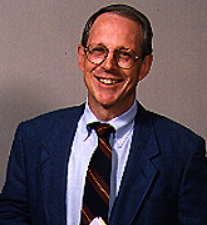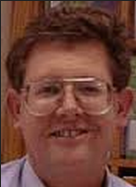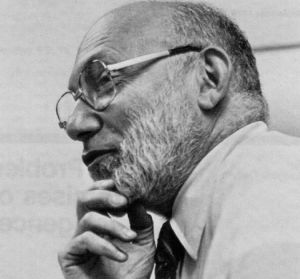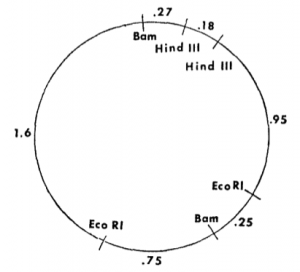The Molgen project at Stanford (above left to right: Joshua Lederberg, Douglas Brutlag, Ed Feigenbaum, Bruce Buchanan) was a collaboration between the Heuristic Programming Project in the Computer Science Department and the Genetics Department at Stanford University in the late 1970s. Participating faculty in the Genetics department included Joshua Lederberg, Douglas Brutlag, and Lawrence Kedes. Faculty on the Computer Science side included Edward Feigenbaum, Bruce Buchanan, and visiting professor Nancy Martin.
Josh Lederberg challenged me to write a program that would solve the DNA structural problems in his laboratory using segmentation data. The first program I developed copied how people solved the problem, based on talking out loud protocols. The program got correct answers, but its performance degraded when it had more data. This seemed wrong, since increased data provided more hints and intuitively should make the problem easier. When I understood how to organize the program’s problem-solving behavior properly as a hierarchical generate-and-test search, the approach was published in Artificial Intelligence as Inferring DNA Structures from Segmentation Data. This paper began my journey to modeling problem-solving as search at a knowledge level.
Molgen research explored the planning of experiments in molecular genetics. P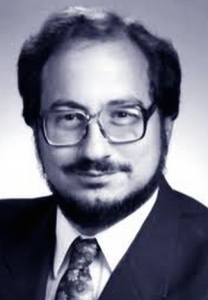 eter Friedland (right) and I were the first two students and we took complementary approaches to planning. Peter developed an approach to planning that began by finding relevant “skeletal plans” and then refining them. I developed a multi-level planning approach that explicitly represented abstract plans and the constraints among sub-plans. Both of our approaches represented genetics knowledge and planned realistic genetics experiments such as were being published in the genetics scientific literature at the time.
eter Friedland (right) and I were the first two students and we took complementary approaches to planning. Peter developed an approach to planning that began by finding relevant “skeletal plans” and then refining them. I developed a multi-level planning approach that explicitly represented abstract plans and the constraints among sub-plans. Both of our approaches represented genetics knowledge and planned realistic genetics experiments such as were being published in the genetics scientific literature at the time.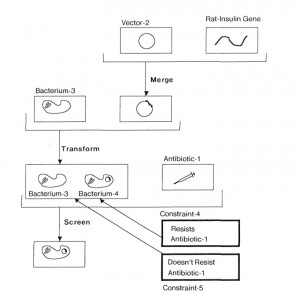
My research writings from this period (below) included an observational study of laboratory practice in Lederberg’s laboratory and a frame-based knowledge representation system (Units). Units was used by several other researchers on projects at Stanford and elsewhere, and was the basis for the commercial knowledge representation tool KEE that was developed at Intellicorp. Other publications presented the workings and constraint reasoning approach of my planner (“constraint posting”) and a theory of planning that merged least-commitment planning with heuristic (assumption-based) planning.
Before Molgen there was Dendral, a ground breaking project in the Heuristic Programming Project for elucidating the structure of organic molecules from mass spectroscopy and other data. Although I did some programming on the project, mainly I learned a lot and had a very minor role. In support of Dendral in 1976 Geoff Dromey, Tom Rindfleisch, Alan Duffield, and I publshed a paper in the Journal of Analytic Chemistry on the Extraction of Mass Spectra from gas chromatography and mass spectrometry data. The technology was all about signal and data processing.
Dromey, R. G., Stefik, M. J., Rindfleisch, T. C., Duffield, A. (1976), Extraction of mass spectra free of background and neighboring component contributions from gas chromatography/mass spectrometry data. Analytical Chemistry, 48:9, pp. 1368-1375, August 1976.
Stefik, M. J., & Martin, N., (1977) A review of knowledge based problem solving as a basis for a genetics experiment designing system, Stanford Computer Science Department Report STAN-CS-77-596, March 1977.
Feitelson, J., Stefik, M. J. (1977) A case study of the reasoning in a genetics experiment. Heuristic Programming Project Report HPP-77-18, (Working Paper), May 1977.
Martin, N., Friedland, P., King, J., & Stefik, M. J. (1977) Knowledge base management for experiment planning in molecular genetics. Fifth International Joint Conference on Artificial Intelligence, August 1977, pp. 882-887.
Stefik, M. (1978) Inferring DNA structures from segmentation data. Artificial Intelligence, 11:1, pp. 85-114, 1978.
Stefik, M., & Friedland, P. (1978) Machine inference for molecular genetics: methods and applications, AFIPS Conference Proceedings, Volume 47, National Computer Conference, June 1978.
Stefik, M. (1981) Planning with constraints: MOLGEN Part 1. Artificial Intelligence, 16:2, pp. 111-140, May 1981. (Reprinted in Feigenbaum, E.A. Building Blocks of Artificial Intelligence, Reading, Massachusetts: Addison-Wesley, 1987.)
Stefik, M. (1981) Planning and meta-planning: MOLGEN Part 2. Artificial Intelligence, 16:2, pp. 141-169, May 1981. (Reprinted in N. Nilsson & B. Webber, Readings in Artificial Intelligence, Tioga Publishing Company, 1982)

